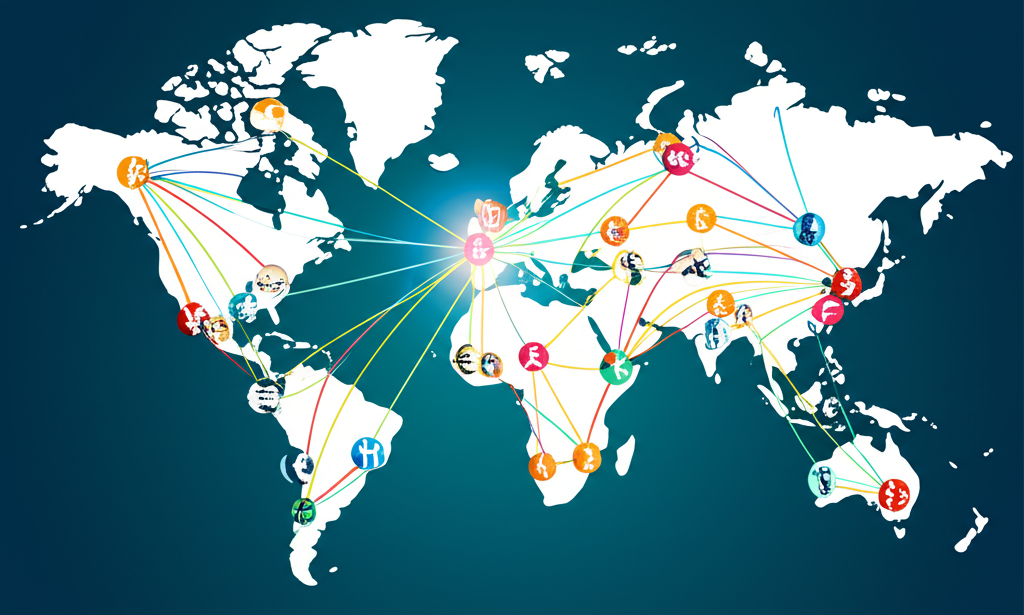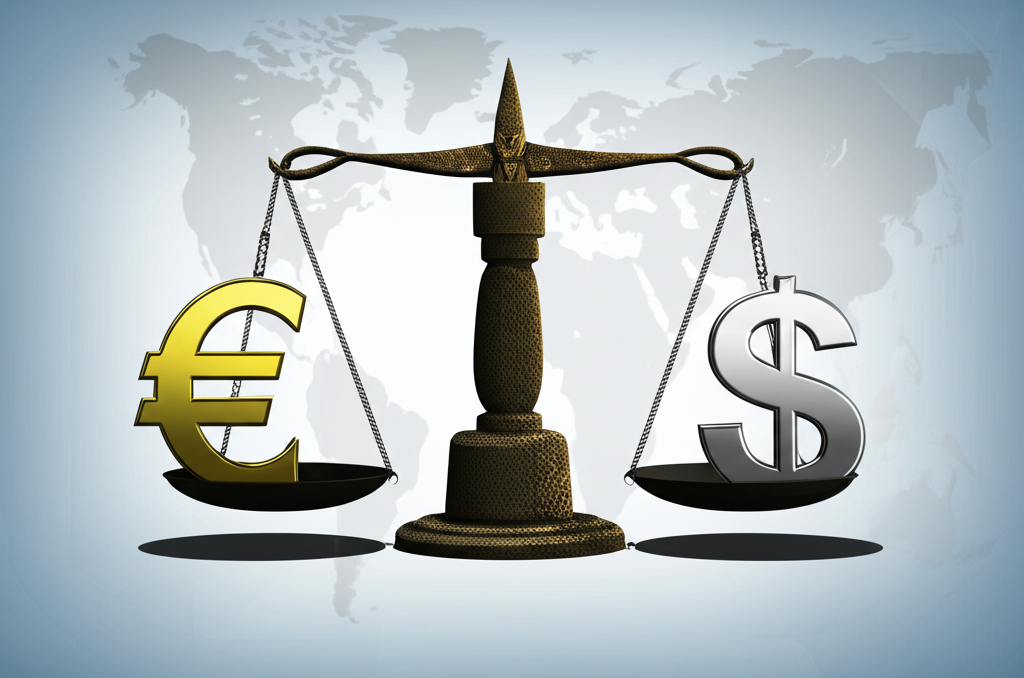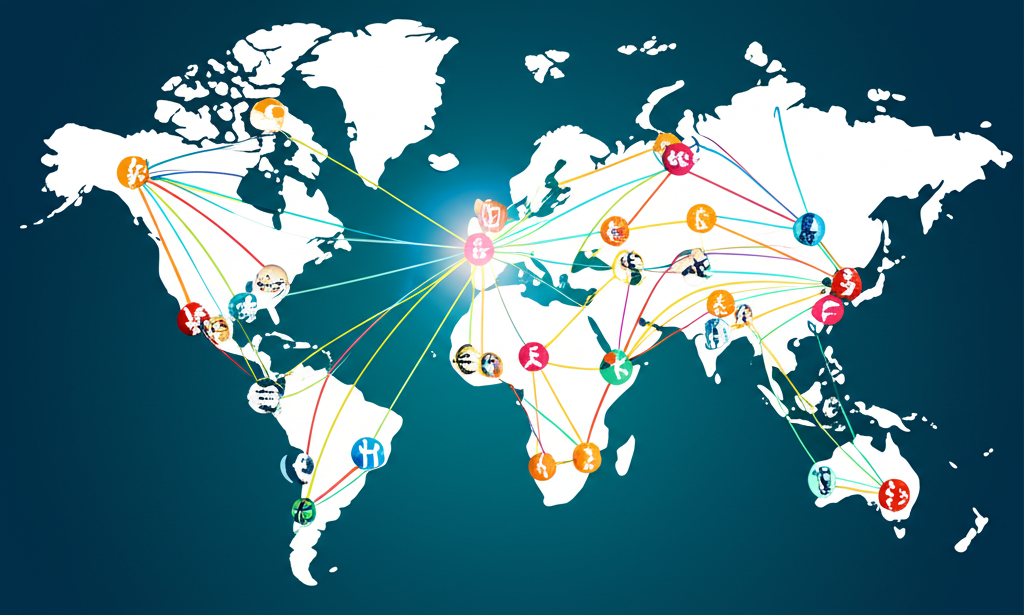Introduction: What Are Forex Pairs and Why Do They Matter?
The global economy thrives on the constant movement of goods, capital, and services across national boundaries. At the core of this vast, interconnected system is the foreign exchange market—commonly known as forex. It’s here that currencies are exchanged, their values shifting in real time based on supply, demand, and a complex web of economic forces. Central to this market are currency pairs, the basic building blocks that define how one currency stacks up against another.

Every time a company imports electronics from Asia, an investor buys shares in a European firm, or a traveler exchanges cash before an overseas trip, a forex pair is at work behind the scenes. These pairs don’t just determine exchange rates—they reflect the relative strength of economies, the stability of governments, and the sentiment of global markets. A rising EUR/USD, for example, suggests growing confidence in the Eurozone compared to the United States. In this way, forex pairs serve as real-time barometers of global economic health, making them essential knowledge for traders, investors, and even everyday consumers.
The Core Mechanics: Base and Quote Currencies Explained
At the heart of every forex transaction is the currency pair, which always consists of two currencies quoted in relation to each other. This pairing allows traders to measure the value of one currency in terms of another, forming the foundation of all forex trading. To understand how these pairs function, it’s critical to distinguish between the two components: the base currency and the quote currency.

Understanding the Base Currency
The base currency appears first in any currency pair and represents the currency being bought or sold. It acts as the reference point—the “one unit” against which the second currency is valued. For instance, in the widely traded EUR/USD pair, the Euro is the base currency. If you’re going long on EUR/USD, you’re buying Euros while simultaneously selling U.S. Dollars. The base currency is always normalized to one unit, meaning the quote that follows tells you exactly how much of the second currency is required to purchase that single unit.
Understanding the Quote (Counter) Currency
The quote currency, also called the counter currency, is the second currency in the pair. It indicates the amount of that currency needed to buy one unit of the base currency. In EUR/USD, the U.S. Dollar is the quote currency. So, if the exchange rate is 1.1000, it means one Euro can be exchanged for 1.10 U.S. Dollars. This dynamic pricing structure enables seamless comparisons between different currencies and powers everything from international trade settlements to speculative trading strategies.
How Exchange Rates Are Determined and Quoted
Exchange rates fluctuate constantly due to the interplay of supply and demand in the decentralized forex market, which operates 24 hours a day across major financial centers. These rates are typically displayed with four decimal places (or two for JPY pairs), capturing even the smallest movements. Most major pairs like EUR/USD or AUD/USD are quoted as direct rates from a U.S. perspective—meaning the foreign currency comes first, followed by the dollar. Others, such as USD/JPY or USD/CAD, are indirect quotes where the U.S. Dollar leads. This standardization helps traders maintain consistency when analyzing and executing trades across different markets.
Types of Forex Currency Pairs
Not all currency pairs are created equal. They vary significantly in terms of liquidity, volatility, trading volume, and sensitivity to economic events. Traders often categorize them into three main groups—major, minor (or cross), and exotic pairs—each offering distinct opportunities and risks.

Major Pairs: The Most Traded Currencies
Major currency pairs all include the U.S. Dollar paired with another top-tier global currency. These are the most liquid and widely traded instruments in the forex market, accounting for the vast majority of daily volume. Their high liquidity translates into tighter spreads, lower transaction costs, and smoother price action—making them ideal for both beginners and experienced traders.
The seven major pairs are:
- EUR/USD (Euro / U.S. Dollar)
- USD/JPY (U.S. Dollar / Japanese Yen)
- GBP/USD (British Pound / U.S. Dollar)
- USD/CHF (U.S. Dollar / Swiss Franc)
- AUD/USD (Australian Dollar / U.S. Dollar)
- USD/CAD (U.S. Dollar / Canadian Dollar)
- NZD/USD (New Zealand Dollar / U.S. Dollar)
Data from the Bank for International Settlements (BIS) Triennial Survey of Foreign Exchange and Over-the-counter (OTC) Derivatives Markets consistently shows that major pairs dominate global turnover. Their stability and responsiveness to macroeconomic data make them central to most trading strategies.
Minor (Cross) Pairs: Trading Without the USD
Minor pairs, often referred to as cross currencies, do not include the U.S. Dollar. Instead, they pair two other major currencies, such as the Euro and British Pound (EUR/GBP) or the Australian Dollar and Japanese Yen (AUD/JPY). While still relatively liquid, these pairs typically have wider spreads and slightly less volume than their major counterparts.
Popular examples include:
- EUR/GBP (Euro / British Pound)
- AUD/JPY (Australian Dollar / Japanese Yen)
- GBP/JPY (British Pound / Japanese Yen)
- EUR/CHF (Euro / Swiss Franc)
Cross pairs are particularly useful for traders who want to take positions based on regional economic dynamics—such as a strengthening Eurozone versus the UK—without being exposed to fluctuations in the U.S. Dollar. They also allow for more nuanced hedging strategies in diversified portfolios.
Exotic Pairs: Higher Risk, Higher Potential Reward
Exotic pairs combine a major currency with one from an emerging or smaller economy. These pairs are far less liquid, exhibit greater volatility, and often come with significantly wider spreads due to lower trading volumes and higher perceived risk. Economic instability, political uncertainty, or sudden policy shifts in the emerging market can cause sharp, unpredictable price swings.
Examples include:
- USD/TRY (U.S. Dollar / Turkish Lira)
- EUR/MXN (Euro / Mexican Peso)
- GBP/ZAR (British Pound / South African Rand)
While exotic pairs can offer attractive opportunities—especially during periods of strong trends or currency crises—they require careful risk management. They’re best suited for seasoned traders who understand the local fundamentals and can tolerate higher levels of uncertainty.
How to Read and Interpret Forex Pair Quotes in Practice
Successfully navigating the forex market requires the ability to interpret live quotes accurately. A standard quote includes the bid and ask prices, from which you can derive the spread and track price movements using pips—the smallest unit of change.

Bid and Ask Prices: Your Entry and Exit Points
Every currency pair displays two prices:
- Bid Price: The highest price a buyer is willing to pay to sell the base currency. If you’re closing a long position or opening a short one, this is the rate you’ll receive.
- Ask Price: The lowest price a seller is willing to accept to buy the base currency. This is the rate you’ll pay when going long.
The ask is always higher than the bid, reflecting the inherent cost of market-making.
The Spread: The Cost of Trading
The spread—the difference between the bid and ask—is a key factor in trading costs. For example, if EUR/USD is quoted at 1.0850 (bid) and 1.0853 (ask), the spread is 3 pips. Tighter spreads are common in major pairs due to high liquidity, while exotics may have spreads of dozens or even hundreds of pips. Minimizing spread costs is especially important for short-term strategies like scalping or day trading, where small price movements determine profitability.
Understanding Pips (Percentage in Point) and Pipettes
A pip represents the smallest standard increment in a currency pair’s price. For most pairs, it’s 0.0001 (the fourth decimal place); for JPY pairs, it’s 0.01 (the second decimal). When EUR/USD moves from 1.1000 to 1.1005, it has increased by five pips. This measurement is crucial for calculating gains, losses, and position size.
Many brokers now quote prices to an additional decimal place—known as a pipette or fractional pip—which is one-tenth of a pip. So, a rate of 1.10005 means 1.1000 plus half a pip. While seemingly minor, pipettes allow for more precise pricing and tighter spreads, particularly in fast-moving markets.
Practical Reading Examples: Putting It All Together
Consider the following live quotes:
| Currency Pair | Bid Price | Ask Price | Spread (Pips) |
| EUR/USD | 1.0850 | 1.0853 | 3 |
| USD/JPY | 155.20 | 155.25 | 5 |
| GBP/CHF | 1.1375 | 1.1382 | 7 |
Example 1: EUR/USD 1.0850 / 1.0853
To buy 1 Euro, you’ll pay 1.0853 U.S. Dollars. If you decide to sell, you’ll receive 1.0850 Dollars per Euro. The 3-pip spread is the immediate cost of entering and exiting the trade.
Example 2: USD/JPY 155.20 / 155.25
Here, the pip is measured at the second decimal. Buying 1 U.S. Dollar costs 155.25 Yen. Selling it returns 155.20 Yen. The 5-pip spread reflects slightly higher transaction costs, typical for JPY-based pairs.
These examples highlight how bid-ask dynamics directly affect your entry and exit points, shaping your potential profit or loss from the outset.
Key Factors Influencing Currency Pair Values
Currency values don’t move in isolation. They respond to a broad spectrum of economic, political, and psychological forces. Understanding these drivers helps traders anticipate shifts rather than simply reacting to them.
Economic Indicators and Data Releases
Macroeconomic data provides insight into a country’s economic performance and future trajectory. Positive reports often strengthen a currency by boosting investor confidence. Key indicators include:
- Gross Domestic Product (GDP): A comprehensive measure of economic output. Strong growth typically supports currency appreciation.
- Inflation (CPI, PPI): Moderate inflation signals demand and growth; excessive inflation erodes purchasing power and may prompt central banks to act.
- Employment Data: In the U.S., the Non-Farm Payrolls report is a major market mover, reflecting labor market strength and consumer spending potential.
- Retail Sales: Indicates consumer confidence and spending trends—key drivers of economic activity.
- PMI Surveys: Leading indicators of manufacturing and service sector health, often influencing short-term price action.
These reports are usually scheduled and released at specific times, creating predictable windows of volatility. Traders often prepare positions ahead of major announcements, such as Federal Reserve interest rate decisions or Eurozone inflation figures.
Interest Rates and Central Bank Monetary Policies
Central banks play a pivotal role in shaping currency values through monetary policy. Institutions like the Federal Reserve (U.S.) or the European Central Bank set benchmark interest rates, which influence capital flows. Higher rates tend to attract foreign investment seeking better returns, increasing demand for the domestic currency. Conversely, lower rates can lead to capital outflows and depreciation.
Even hints about future policy changes—such as a shift toward tightening or easing—can trigger significant market moves. For example, a single comment from a Fed chair suggesting a rate hike could strengthen the U.S. Dollar across multiple pairs. As a result, central bank meetings and official statements are among the most closely watched events in the trading calendar.
Geopolitical Events and Market Sentiment
Beyond numbers, human factors like political instability, elections, trade disputes, and global conflicts can dramatically alter currency trajectories. During times of uncertainty, investors often flock to safe-haven currencies such as the U.S. Dollar, Japanese Yen, or Swiss Franc, driving their value higher—even if their economic fundamentals don’t fully justify the move.
Conversely, emerging market currencies may suffer during global risk-off periods, regardless of local conditions. For instance, a sudden escalation in geopolitical tensions might weaken commodity-linked currencies like the Australian Dollar or trigger a sell-off in the South African Rand. News cycles, social media, and market psychology can amplify these effects, sometimes overriding economic data in the short term.
Common Misconceptions and Pitfalls for Beginners
Entering the forex market without proper preparation can lead to costly mistakes. Many newcomers operate under flawed assumptions that compromise their success.
- “All pairs trade the same way”: Major pairs like EUR/USD behave very differently from exotics like USD/TRY. Liquidity, volatility, and response to news vary widely. Treating them interchangeably can result in unexpected losses.
- “Forex is a quick path to wealth”: While profits are possible, forex trading demands discipline, education, and emotional control. It’s not a get-rich-quick scheme, and many beginners lose capital due to overconfidence.
- “One indicator is enough”: Relying solely on GDP or interest rates gives an incomplete picture. Currencies are influenced by a network of interrelated factors—ignoring any one can lead to flawed analysis.
- “More leverage means more profit”: Leverage magnifies both gains and losses. Over-leveraging is a leading cause of account blowouts. A 100:1 leverage ratio means a 1% adverse move wipes out 100% of your margin.
- “I can predict the market perfectly”: No trader has a flawless forecast. The market reacts to unforeseen events, human behavior, and complex interactions. Success comes from managing risk and adapting, not from predicting every move.
Recognizing these misconceptions early helps build a more realistic and sustainable trading mindset.
Beyond the Basics: Leveraging Your Understanding of Forex Pairs
Grasping the fundamentals of currency pairs is just the beginning. This knowledge forms the foundation for more advanced trading techniques and strategic decision-making.
- Leverage and Margin: Knowing how pips translate into monetary value allows you to calculate risk per trade and use leverage responsibly. For example, a 10-pip stop-loss on a standard lot of EUR/USD equals $100 in risk—information critical for position sizing.
- Technical Analysis: Charts plot price movements of currency pairs over time. Patterns, trends, and indicators only make sense when you understand the underlying dynamics of the pair being analyzed.
- Fundamental Analysis: Economic reports, central bank actions, and geopolitical developments directly impact currency values. A solid grasp of pair mechanics lets you interpret these events in context.
- Risk Management: Different pairs have different volatility profiles. Major pairs may allow tighter stops, while exotics require wider buffers. Tailoring your strategy to each pair enhances long-term survival.
By integrating this foundational knowledge, traders can develop robust systems that combine analysis, execution, and risk control—key pillars of consistent performance.
Conclusion: Mastering the Fundamentals of Forex Pairs
Currency pairs are the lifeblood of the foreign exchange market, serving as the fundamental units through which global currencies are priced, exchanged, and analyzed. From the structure of base and quote currencies to the forces shaping their value, a deep understanding of forex pairs is essential for anyone involved in international finance, trade, or investment.
Whether you’re evaluating economic data, interpreting live quotes, or assessing risk across different pair types, the principles outlined here provide a solid framework for informed decision-making. By mastering the mechanics of bid-ask spreads, pips, and market drivers, traders gain the clarity and confidence needed to navigate one of the world’s most dynamic financial markets. This foundational knowledge isn’t just academic—it’s the starting point for building a disciplined, strategic, and ultimately successful approach to forex trading.
What is the primary function of a currency pair in forex trading?
The primary function of a currency pair is to express the relative value of one currency against another. It facilitates the exchange of one currency for another, allowing traders to speculate on the appreciation or depreciation of a currency based on economic, political, and social factors.
How do you determine which currency is the “base” and which is the “quote” in a pair?
In a currency pair, the first currency listed is always the base currency, and the second currency is the quote (or counter) currency. The quote indicates how much of the quote currency is needed to buy one unit of the base currency.
What are the three main types of currency pairs, and how do their characteristics differ?
The three main types are:
- Major Pairs: Involve the USD and another major global currency (e.g., EUR/USD). High liquidity, tight spreads, lower volatility.
- Minor (Cross) Pairs: Involve two major currencies but exclude the USD (e.g., EUR/GBP). Moderate liquidity, slightly wider spreads, moderate volatility.
- Exotic Pairs: Involve a major currency and a currency from an emerging or smaller economy (e.g., USD/TRY). Low liquidity, wide spreads, high volatility.
How does the “pip” relate to the value and movement of a currency pair, and how is its value calculated?
A pip (percentage in point) is the smallest standard unit of price movement for a currency pair. For most pairs, it’s the fourth decimal place (0.0001), while for JPY pairs, it’s the second (0.01). Pips are crucial for measuring profit or loss, as the value of a trade changes by a certain number of pips, and each pip has a specific monetary value based on the trade size.
What role do central banks play in influencing the value of currency pairs through monetary policy?
Central banks significantly influence currency values by setting interest rates and implementing monetary policies. Higher interest rates typically strengthen a currency by attracting foreign investment seeking better returns, while lower rates can weaken it. Their policy statements and decisions are closely monitored and can cause substantial shifts in currency pair values.
How do you accurately read currency pairs, including understanding bid, ask, and spread?
To read a currency pair (e.g., EUR/USD 1.1000/1.1003):
- The bid price (1.1000) is the price at which you can sell the base currency (EUR).
- The ask price (1.1003) is the price at which you can buy the base currency (EUR).
- The spread is the difference between the ask and bid prices (1.1003 – 1.1000 = 0.0003 or 3 pips), representing the cost of the trade.
What is the “5-3-1 rule in forex,” and how does it apply to currency pairs?
The “5-3-1 rule” is not a universally recognized or standard forex trading rule. It might refer to specific trading strategies or individual risk management guidelines used by certain traders or educators. Generally, effective forex trading involves understanding core concepts like currency pair mechanics, risk management (e.g., the 1% or 2% rule for position sizing), and a solid trading plan, rather than relying on unverified “rules.”
Can understanding currency pairs help in predicting future market movements, and what tools are used?
Understanding currency pairs is fundamental for analyzing and *anticipating* future market movements, though not predicting them with certainty. It forms the basis for both technical analysis (using charts, indicators, and historical price data to identify patterns) and fundamental analysis (evaluating economic data, geopolitical events, and central bank policies). Tools like economic calendars, charting software, and news feeds are used to interpret the factors influencing pairs.
What is the significance of the “spread” when trading currency pairs, and how does it affect profitability?
The spread is significant because it represents the transaction cost of trading a currency pair. It’s the difference between the buy (ask) and sell (bid) price. A wider spread means higher trading costs, which can reduce profitability, especially for frequent traders or those engaging in scalping strategies. Brokers earn their commission through this spread.
What are some common mistakes beginners make when learning about and trading currency pairs?
Beginners often make mistakes such as:
- Over-leveraging, risking too much capital on a single trade.
- Not understanding the unique characteristics (liquidity, volatility) of different currency pair types.
- Ignoring fundamental economic data or geopolitical events.
- Failing to implement proper risk management strategies like stop-loss orders.
- Chasing quick profits without a well-researched trading plan.

留言